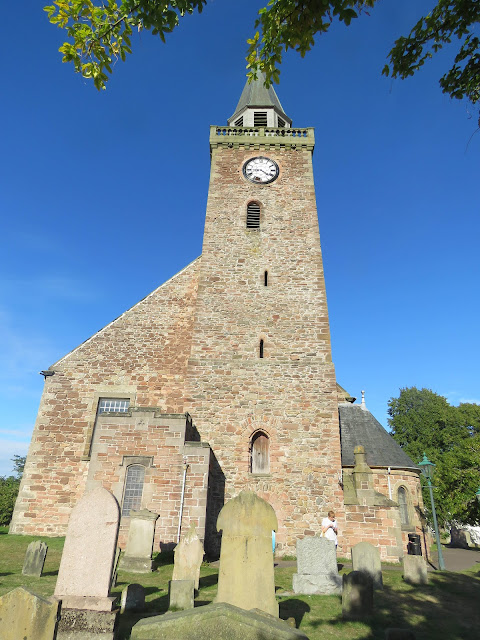We left Glencoe fairly early after having a uninspiring breakfast at the bed and breakfast. The checkout time was officially at ten o'clock, but our landlady was knocking on the door at ten minutes before that telling us that she needed to clean the room. I had no desire to stay longer.
From Glencoe we headed northeast along what is known as the Great Glen of Scotland. The valley is one of those places on earth where it is easy to discern the cracks in the surface of the earth. The fault that underlies the sixty odd miles of the Glen, known as the Great Glen fault, splits the highlands in half with the Northwest Highlands on one side and the Grampian Mountains on the other. About two thirds of the fault is composed of a chain of lakes, Loch Ness being the largest and deepest.
At the beginning of the 19th century, Scottish engineers constructed a canal to link these lakes to each other and to the sea on either side of the country. The Caledonian Canal, as it came to be called, allowed ships to not only save time when traveling from one side of Scotland to the other, but also to avoid the treacherous passage by the Orkney Islands at the tip of the highlands.
We stopped at Fort Augustus where the Caledonian Canal meets Loch Ness. It's a cute little town, but it was absolutely overrun with tourists from every spot in the world.
The reason for this popularity is not the canal, though it is picturesque enough.
No, this is all about "Nessie," the Loch Ness monster. People from around the world have all heard about Nessie and the locals run cruises on the lake where tourists hope that they will actually catch a shot of the elusive creature. So far, nobody has, of course. But while they wait for their boats they can buy Nessie souvenirs and eat Loch Ness themed snacks.
After a short stop here, we continued on towards our stop for the evening, Inverness. This was a comparatively small town until completion of the Caledonian Canal when it suddenly became the second most important port on the North Sea. Most of the buildings in the city date from the Victorian period, perhaps most famously the fake castle on the hill behind John.
We are staying at the Palace Hotel directly across the River Ness from the castle. You can identify it from the turrets in the picture below.
It was a fairly cool afternoon, and John and I found a walking tour in one of our guide books. It started at the clock tower which still dominates the skyline.
The city hall or "town house" is just across the street. It is a grand bit of Victoriana, isn't it?
There was a kid dressed in a kilt, playing a bagpipe, busking for tourist pounds.
On the building across the street from the Town Hall, we discovered a couple tablets with various quotations from Scripture, all warning of immanent punishment for sinful behavior.
The guidebook informed us that a disgruntled resident, unhappy that some of the city councilors drank, put these quotes up to warn them of the dangers of hell fire that awaited them as a result of their tippling.
At the conclusion of our walking tour we came to the "Old Kirk", the only pre-Reformation church building in Inverness. The walking guide told us that after the route of the Jacobite forces at Culloden, soldiers who had somehow escaped death on the battlefield were summarily shot to death here.
After having dinner at a Turkish restaurant, we walked home across the "Shaking Bridge," a nineteenth century pedestrian walkway.
We took home a few leftovers from the restaurant. Back at the hotel, we had a particularly aggressive visitor who demanded a share of the food.











